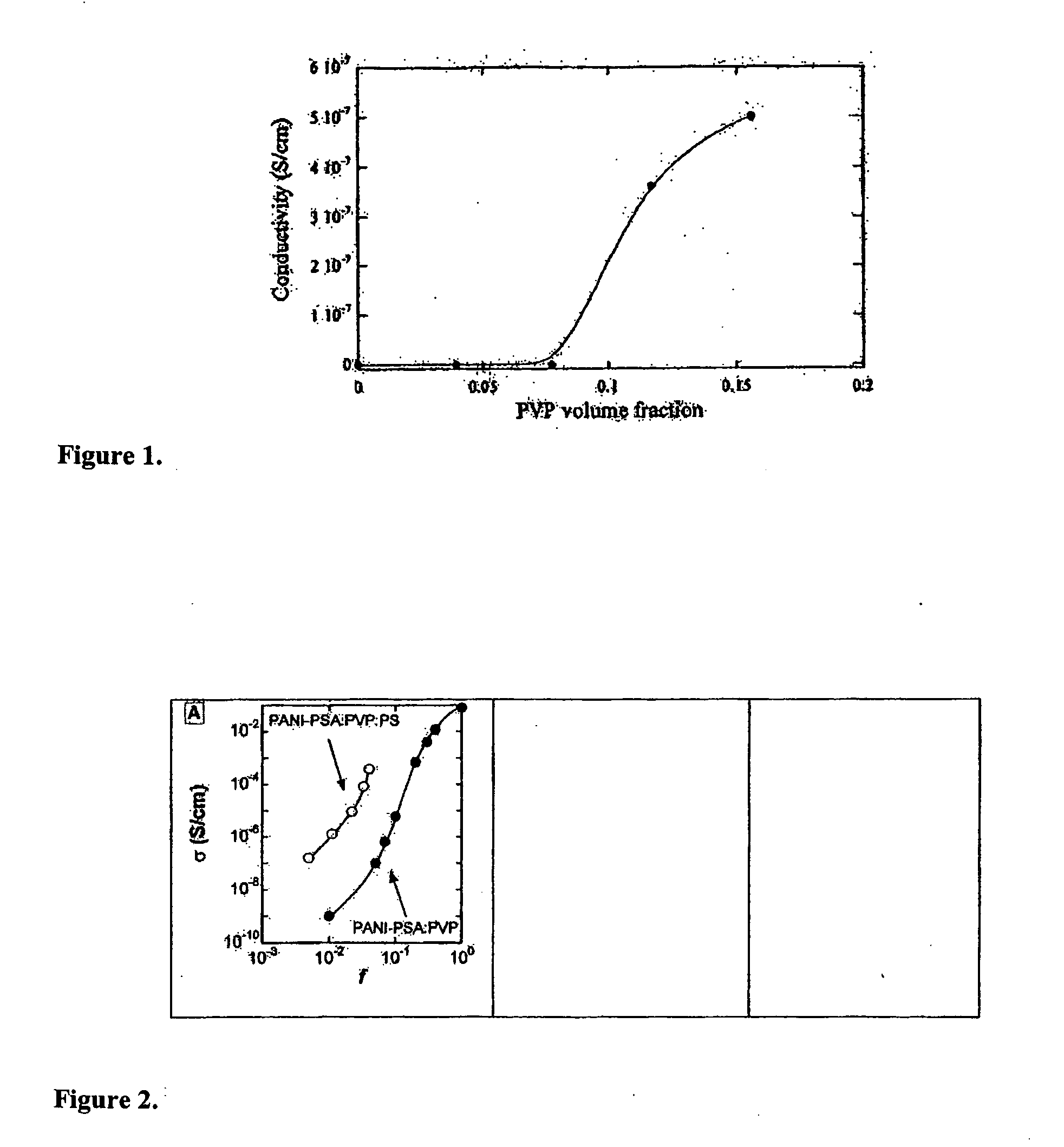Process for creating high internal phase polymeric emulsions
- Summary
- Abstract
- Description
- Claims
- Application Information
AI Technical Summary
Benefits of technology
Problems solved by technology
Method used
Image
Examples
example 1
Formation of HIPPE Using a Colloidal Dispersion
[0094] The examples described below demonstrate a new procedure to synthesize HIPPE blends, which enables the control of the morphologies of both the continuous and dispersed phase to an extent well beyond that possible with other currently available techniques. The embodiments make use of narrow size distribution colloidal particles as precursors of the final dispersed phase and properly designed block copolymers to build up the continuous phase. The block copolymer is designed in such a way to have two immiscible blocks, one of which is short and compatible with the colloid and the other of which is long and soluble in the solvent used to disperse the colloid. The examples described below use polystyrene emulsion particles, polystyrene-poly(2-vinylpyridine) block copolymer, and ethanol as solvent. The final HIPPE structure was obtained from the colloidal dispersion in a sequence including solvent evaporation and annealing. During ann...
example 2
Preparation of HIPPE with Proton Conductivity
[0105] The continuous phase of the HIPPE can be utilized for specific mechanical, rheological, or transport applications, for example to conduct electrons or protons. Proton conductivity proves to be a way to detect the threshold for percolation of the PVP phase. In the present examples, to determine percolation effects, the continuous phase was doped with CSA and then the ionic conductivity of the final blend was measured. As set forth above, the colloidal dispersion was prepared in ethanol, but CSA was added and dissolved in the solution at a concentration corresponding 1:1 molar ratio of the sulfonic groups to the nitrogen atoms of the PVP. Thus, if the PVP and CSA form a strong complex already in solution, the surfactant used to create the percolating structure will no longer be the block copolymer but the PS-PVP2:CSA complex. Owing to the overlapping of sulfonic and aromatic groups in Fourier transform infrared spectroscopy, dynamic...
example 3
Preparation of a HIPPE Containing PS 0.5 Microns Particles in PS-PVP Block Copolymer
[0107] Polymer B is omitted, polymer A is polystyrene (PS) and the AB diblock copolymer is polystyrene-polyvinylpyridine (PS-PVP). In this example, 0.06 grams of HY48 (PVP-PS block copolymer, Mw=70000, 16% fraction of PVP) are dissolved in 5 grams of ethanol, with gentle heating. The solution is cooled to room ambient temperature. Micelles are formed, indicating a high chemical potential of the block copolymer in the selected solvent. 0.24 grams of crosslinked PS microbeads (0.5 microns, COOH surface functionality) is dispersed in the solution by sonificating the solution for 60 minutes. The solution is then evaporated at atmospheric pressure and 75° C., which is lower than the boiling point of ethanol at 78° C. The final blend has a minimum PS / PVP volume ratio of 0.832 / 0.168, since parts of the block copolymer migrate and attach to the glass surface of the vessel. The dried blend was annealed for a...
PUM
| Property | Measurement | Unit |
|---|---|---|
| Fraction | aaaaa | aaaaa |
| Fraction | aaaaa | aaaaa |
| Percent by volume | aaaaa | aaaaa |
Abstract
Description
Claims
Application Information
 Login to View More
Login to View More - R&D
- Intellectual Property
- Life Sciences
- Materials
- Tech Scout
- Unparalleled Data Quality
- Higher Quality Content
- 60% Fewer Hallucinations
Browse by: Latest US Patents, China's latest patents, Technical Efficacy Thesaurus, Application Domain, Technology Topic, Popular Technical Reports.
© 2025 PatSnap. All rights reserved.Legal|Privacy policy|Modern Slavery Act Transparency Statement|Sitemap|About US| Contact US: help@patsnap.com

